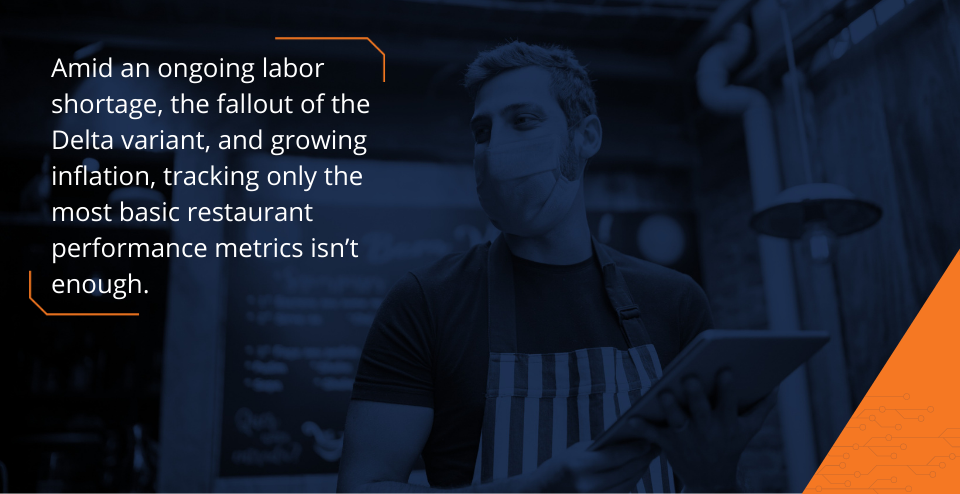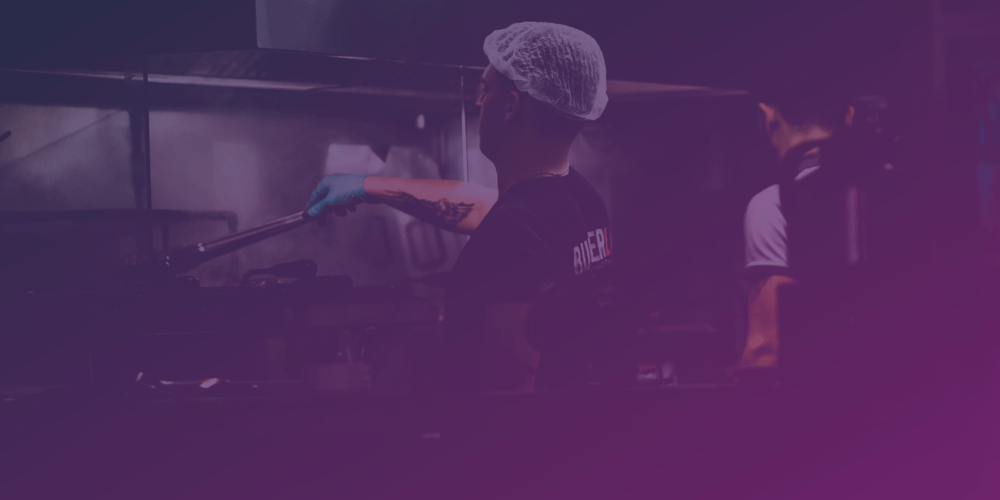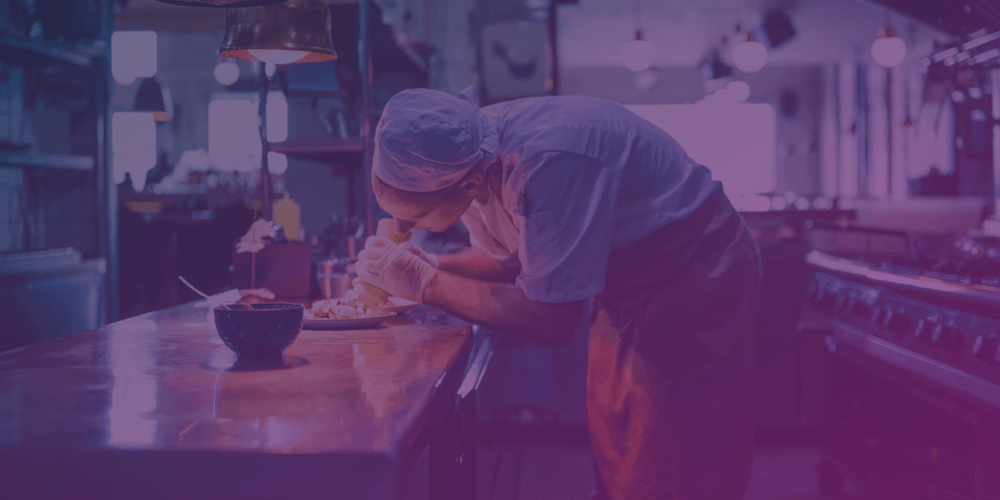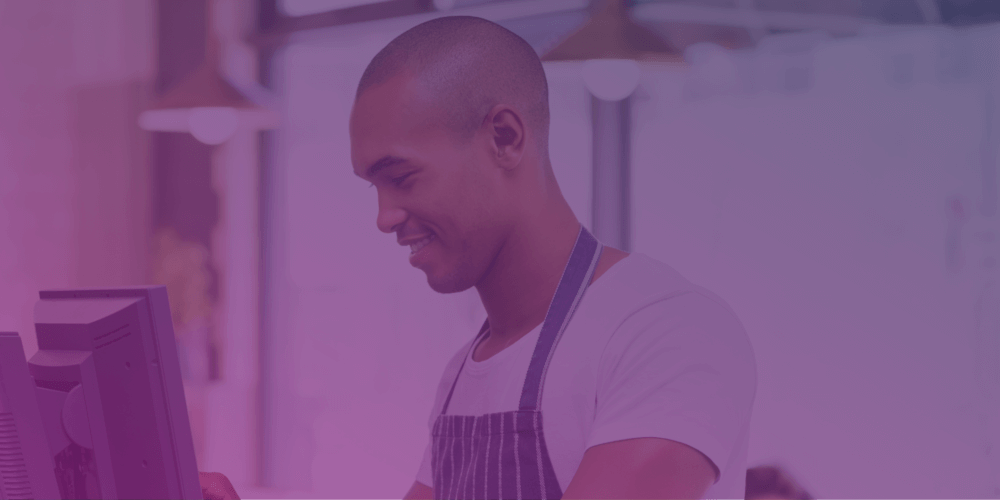The data you need to gauge the success of your restaurant concept seems like it should be straightforward.
You look at overall sales, compare it with the cost of doing business (i.e. labor, inventory cost, rent, etc.), and you have a pretty good idea which locations are performing well and which aren’t meeting expectations.
But we’ve reached a point, amid an ongoing labor shortage, the fallout of the Delta variant, and growing inflation, where tracking basic restaurant performance metrics isn’t enough to gain an edge on the competition and ensure acceptable profit margins. Concepts that want to succeed must truly excel in data tracking, going beyond the basic information to analyze granular, highly detailed restaurant performance metrics. Doing so will reduce loss among the margins and ultimately reap record profits.
Here are 8 restaurant performance metrics you should be tracking concept-wide, per franchisee, and on an individual location basis.
1. Inventory Variance
We all know the equation used to calculate Cost of Goods Sold (COGS):
Beginning Inventory + Purchase (orders) – Ending Inventory = Usage.
Usage/Sales = COGS.
The problem with this equation is that COGS only gets you so far. An additional metric you should track on top of COGS is inventory variance.
Knowing what your theoretical sell-through potential is based on inventory and comparing that to what you’re actually selling allows you and your general managers to make the necessary adjustments to boost profit. It enables you to account for seasonal price adjustments, waste, and other factors, which then empowers you to strategize ways to counteract these fluctuations.
Eventually, if you’re carefully tracking inventory variance, you can get your Theoretical Vs. Actual (TvA) numbers more closely aligned, drawing out the maximum revenue potential for your business.
2. Plated Waste
Measuring the cost of goods that spoil, i.e. don’t get put on a plate, is good, but it’s only the start. A better restaurant performance metric to track is Plated Waste.
Tracking waste that is plated and sent out the kitchen door (or over the bar top) helps turn a money pit into a money-maker (yes, we’ve included a shameless Bar Rescue callout).
Carefully calculating comps, spills, and even left-over food, including portion sizes that are overly large and consistently left on the plate, can rein in costs by suggesting new training strategies that will reduce waste. It will also give you the information necessary to make data-backed menu and recipe adjustments in the future.
3. Labor Efficiency
Understanding how much your team members make is the most bare-bones way to understand labor costs. A better metric is labor efficiency, which takes into account under- and over-staffing as well as its impact on delivery and carry-out.
Truly successful restaurants understand how to stagger schedules to create an efficient kitchen and front-of-house, something that’s even more important as a labor shortage continues and salary increases and hiring bonuses become the norm.
Employee loyalty is more important than ever to your operations. Every staff member without anything to do during a shift, or an overtaxed team that causes guests to be turned away because of the wait or a poor experience, can cut into long-term revenue. Huge swings in the capabilities of your labor pool and the number of people available is no way to run a business, and the more you can get those swings under control, the better off you will be.

4. Ingredient Sales
Knowing what items sell well doesn’t go far enough. A true innovator in the restaurant space will take a close look at each individual ingredient to better understand how much a portion of a single item costs, what it sells for, and how many menu items it populates.
This can help you identify not just successful menu performers, but low-cost, high-value ingredients that can be used to reinvigorate low-selling dishes and eventually enable you to cut high-cost, low-value ingredients entirely. You can even use the newfound insights to create brand new entrees that incorporate your highest-performing inventory items.
Think of it as addition by subtraction!
5. Multi-Year Sales Data
It’s good to know what your sales data looked like last year, but it’s not necessarily helpful for the future when you consider just how much things changed in 2020, then changed again as COVID case counts improved in early 2021, then transformed yet another time once the Delta variant took hold around the country this summer.
In such an environment, where the local regulatory landscape and the preferences of your guests can change at the drop of a hat, it’s hard to use any single year of historic data as a baseline for strategizing what comes next for your concept.
2022 may as well be a different universe than what we experienced in 2020 and even the early months of 2021, so 2019 sales data could be the preferred baseline for what you can expect performance to look like in the next year or fiscal year. Even your most recent sales numbers might be a better indicator of how to strategize for the future.
2020, however, with its complete pivot to delivery/takeout, simply shouldn’t be relied upon as much to determine how you’ll push your concept forward in 2022. You should instead be looking at sales across multiple years and using that information to strategize how you’ll pivot next.
6. Non-Ideal vs. Actual
IvA is a basic tenet of the restaurant industry, but in 2022, non-IvA numbers will grow increasingly important.
This is another area where COVID has had a massive impact, forcing restaurants to pour more money than ever into napkins, carry-out containers, disposable cutlery, sanitization supplies, and more. It’s important to understand where you’re sinking costs and to make the necessary adjustments depending on restaurant patterns and the changing habits of your customer base.
7. Revenue Per Customer
Knowing how many guests you serve is critical, but as you can probably guess by now, you could be doing more.
Diners’ comfort level with coming back to restaurants and bars can vary based on geography, personal preference, and their own experiences with COVID. Until your entire concept has a better understanding of traffic patterns for the new normal, you’ll want to maximize how much money you’re earning per customer.
Retooling food and drink specials, value menus, and creative online-only/app offers can help inch this number upward, but you first have to know the number before you can strategize how to increase your profit.
This works at both the micro and the macro level. If there’s a location that isn’t bringing in adequate revenue per customer, you can drill down deeper to find out why and intervene as necessary. And if one location is an outlier that’s out-performing all other venues, you can see what processes they’ve instituted that might be copied across your entire concept.
8. Third Party Delivery Percentage of Overall Sales
By now, you should have a pretty good idea how much money you’re losing to third-party delivery and carry-out companies. For the concepts that truly want to be successful when partnering with a third-party provider, you’ll want to look more closely at what percentage of your restaurant sales are coming from those third-party apps.
While a partnership in some regards, these apps can also be a competitor in others. You don’t want to flat-out turn down third-party sales, but there are ways to get creative and incentivize your customers to order from you directly when they can.
Loyalty apps are one way to do this, as are dine-in specials not redeemable for carry-out. This may be the trickiest balance to pull off, as you don’t want to cut off ordering avenues, but you should try to balance long-term revenue goals with the short-term benefit of working with a third party.
These delivery apps aren’t going anywhere for the time being, and it’s on you to figure out the strategy required to make it a successful partnership for all parties and all locations.
The Deviled Eggs Are in the Details
Choosing the right restaurant performance metrics to track can be a defining factor in your future success.
If you’re interested in getting your back office in order across every location, contact Decision Logic today and get the data you need to succeed!




